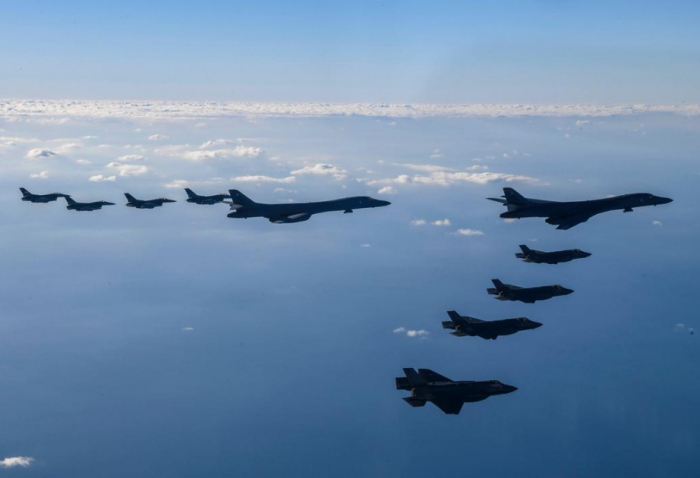The trilateral drills took place over waters east of South Korea's southern island of Jeju amid heightened tensions after the North fired the new Hwasong-19 ICBM into the East Sea on Thursday in its first launch of a long-range ballistic missile this year.
During the drills, South Korean, U.S. and Japanese fighter jets escorted the U.S. heavy bomber over waters where the air defense identification zones of South Korea and Japan overlap, the Joint Chiefs of Staff (JCS) said.
The drills also involved the heavy bomber striking a simulated target in a show of its "overwhelming" capabilities, according to the JCS. It did not specify the number of B-1Bs involved.
"This exercise took place in response to North Korea's launch of an ICBM on Oct. 31," the JCS said in a release. "Amid gradually increasing security cooperation between the three countries, (we) will strengthen coordination to deter and jointly respond to North Korea's threats."
It marked the second air exercise between the three sides this year, the JCS said, amid joint efforts to strengthen trilateral security cooperation against evolving North Korean nuclear and missile threats.
AzVision.az
More about: UnitedStates SouthKorea Japan NorthKorea
















































